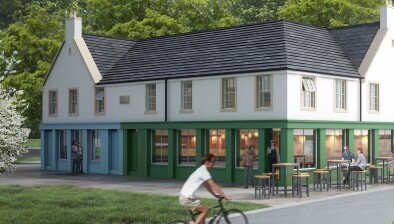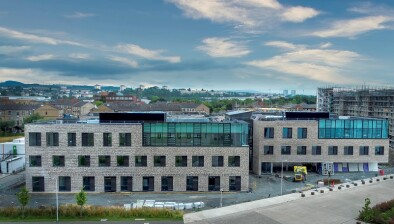New model predicts flood risk of River Clyde
A new tidal flood model has been produced for developers and planners to consider when working near the River Clyde between Dalbeth in Glasgow and Greenock.
Glasgow City Council and SEPA hope their new River Clyde Tidal Flood Model will be used by developers, planners, investors and organisations and individuals with an interest.
This collaboration replaces the River Clyde Flood Management Strategy model.
SEPA and local authorities agree that the model represents the best available understanding of current and future flood risk from the tidal Clyde for coastal flooding events, including storm surges and sea level rise, to the year 2100.
The model confidently supports the information on the SEPA Flood Maps, which will be updated in due course to take account of the information from the model.
The consideration of tidal flooding is increasingly important as rising sea levels mean that flooding associated with high tides and storm events will be to a greater depth and cover a larger area of land than at present.
The Clyde has always been a key part of economic and social life in the West of Scotland, and the Glasgow city-region has a vision for a climate-resilient river corridor that supports a mix of land uses and provides attractive spaces where people want to spend time.
Development sites along the banks of the Clyde, many of which have lain vacant for many years, should be developed in a way that recognises the challenge of increased flood risk due to climate change. This challenge can be addressed through sensitive design that aligns with an overarching principle of no net loss of the functional floodplain, and gives consideration to land use vulnerability, and water resilient construction and operational practices.
Using the River Clyde Tidal Flood Model model, a proportionate, plan-led, approach to managing flood risk for existing and new communities will be delivered by key stakeholders (local authorities and SEPA) along the tidal reach catchment.
For new development, this catchment management approach is proposed to ensure no net loss of functional floodplain storage for the tidal reach of the river, thereby allowing and supporting appropriate development within that tidal reach.
Clyde Mission is working with key stakeholders to lead the development of a long-term adaptation approach for the River Clyde and wider City Region, and this will be informed by the River Clyde Tidal Flood Model. An adaptation approach sets out a series of actions to be taken at the appropriate time, as part of a phased implementation of measures, to build resilience to climate change.
This approach is a flexible way to facilitate long-term planning, modifying plans as needed, and allowing investment to be made when required. A key first step in developing a framework for adaptation will be the publication, in the coming weeks, of a report that provides options analysis and scoping of potential adaptation pathways for the tidal Clyde.
The River Clyde Tidal Flood Model will continue to be updated with new development as it is approved through the planning system, to ensure the model both remains current and is the best available source of flood risk information for the Clyde to the year 2100.
Councillor Susan Aitken, leader of Glasgow City Council and Chair of the Glasgow City Region Cabinet, said: “The Clyde is central to the life of Glasgow and our neighbouring local authorities, and like all other such rivers, has to face the reality of climate change. The new River Clyde Tidal Flood Model will allow proper management of flood risk along the river, ensuring that appropriate development takes place on its banks and flood plains. This management will ensure that the economic, environmental and social benefits of the many uses - both existing and to come - on the Clyde can continue to be delivered for future generations.”
Vincent Fitzsimons, head of hydrology and flooding at SEPA, said: “Scotland is already seeing the impacts of a changing climate. We know that there is locked in climate change we cannot reverse - including sea level rise. Climate change is a huge challenge and SEPA is pleased to have worked with Glasgow City Council to develop the Tidal Clyde Model as a shared tool to be used by all partners.
“SEPA endorses it as the current best available data to help assess the flood risk ahead for land use planning to allow communities in the area to thrive. Avoiding or adapting to flooding is a fundamental consideration in the design of great places as we learn to live safely with flooding both now and in the future.”

















